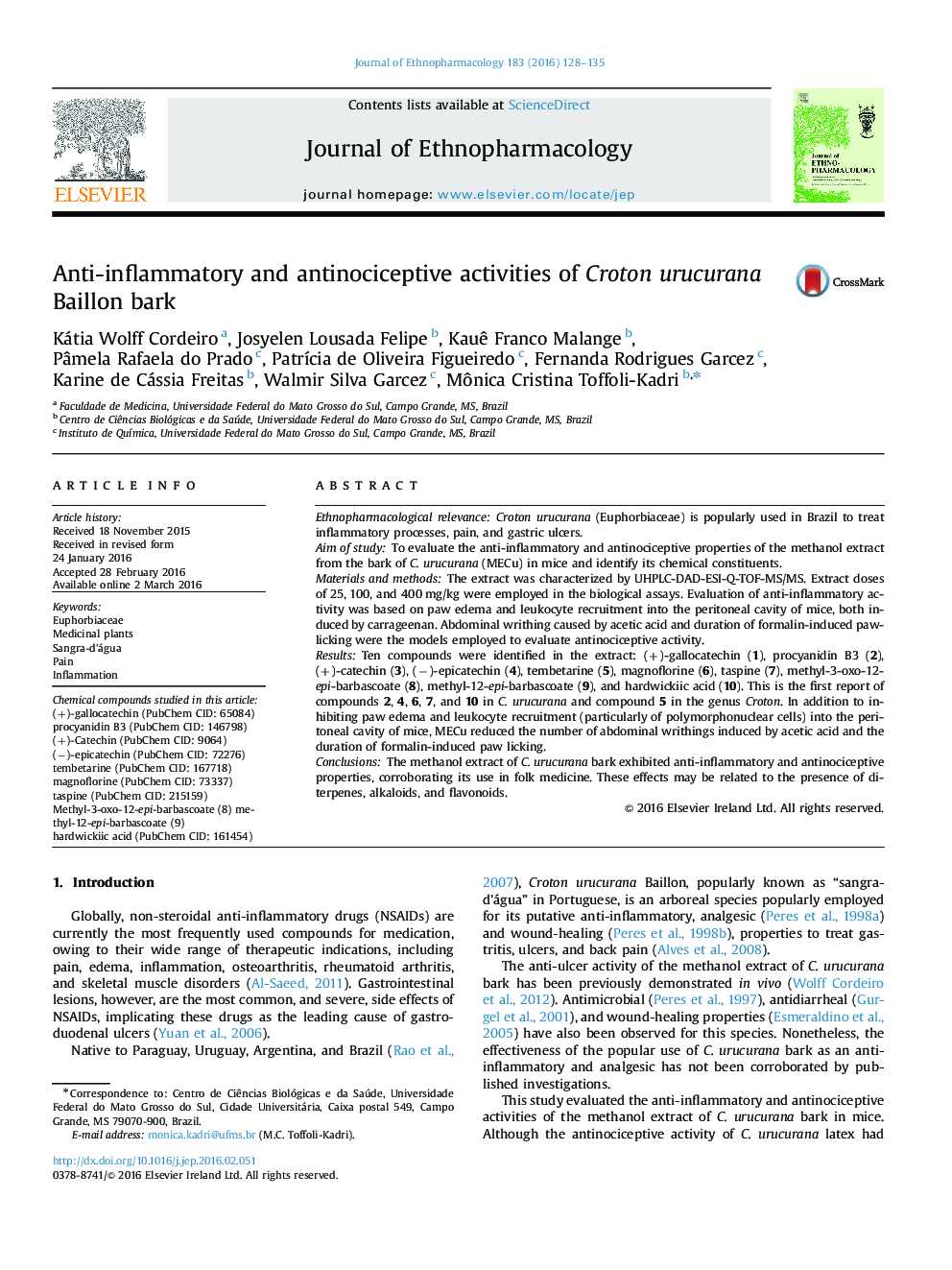| کد مقاله | کد نشریه | سال انتشار | مقاله انگلیسی | نسخه تمام متن |
|---|---|---|---|---|
| 2544872 | 1560379 | 2016 | 8 صفحه PDF | دانلود رایگان |

Ethnopharmacological relevanceCroton urucurana (Euphorbiaceae) is popularly used in Brazil to treat inflammatory processes, pain, and gastric ulcers.Aim of studyTo evaluate the anti-inflammatory and antinociceptive properties of the methanol extract from the bark of C. urucurana (MECu) in mice and identify its chemical constituents.Materials and methodsThe extract was characterized by UHPLC-DAD-ESI-Q-TOF-MS/MS. Extract doses of 25, 100, and 400 mg/kg were employed in the biological assays. Evaluation of anti-inflammatory activity was based on paw edema and leukocyte recruitment into the peritoneal cavity of mice, both induced by carrageenan. Abdominal writhing caused by acetic acid and duration of formalin-induced paw-licking were the models employed to evaluate antinociceptive activity.ResultsTen compounds were identified in the extract: (+)-gallocatechin (1), procyanidin B3 (2), (+)-catechin (3), (−)-epicatechin (4), tembetarine (5), magnoflorine (6), taspine (7), methyl-3-oxo-12-epi-barbascoate (8), methyl-12-epi-barbascoate (9), and hardwickiic acid (10). This is the first report of compounds 2, 4, 6, 7, and 10 in C. urucurana and compound 5 in the genus Croton. In addition to inhibiting paw edema and leukocyte recruitment (particularly of polymorphonuclear cells) into the peritoneal cavity of mice, MECu reduced the number of abdominal writhings induced by acetic acid and the duration of formalin-induced paw licking.ConclusionsThe methanol extract of C. urucurana bark exhibited anti-inflammatory and antinociceptive properties, corroborating its use in folk medicine. These effects may be related to the presence of diterpenes, alkaloids, and flavonoids.
Figure optionsDownload high-quality image (361 K)Download as PowerPoint slide
Journal: Journal of Ethnopharmacology - Volume 183, 13 May 2016, Pages 128–135